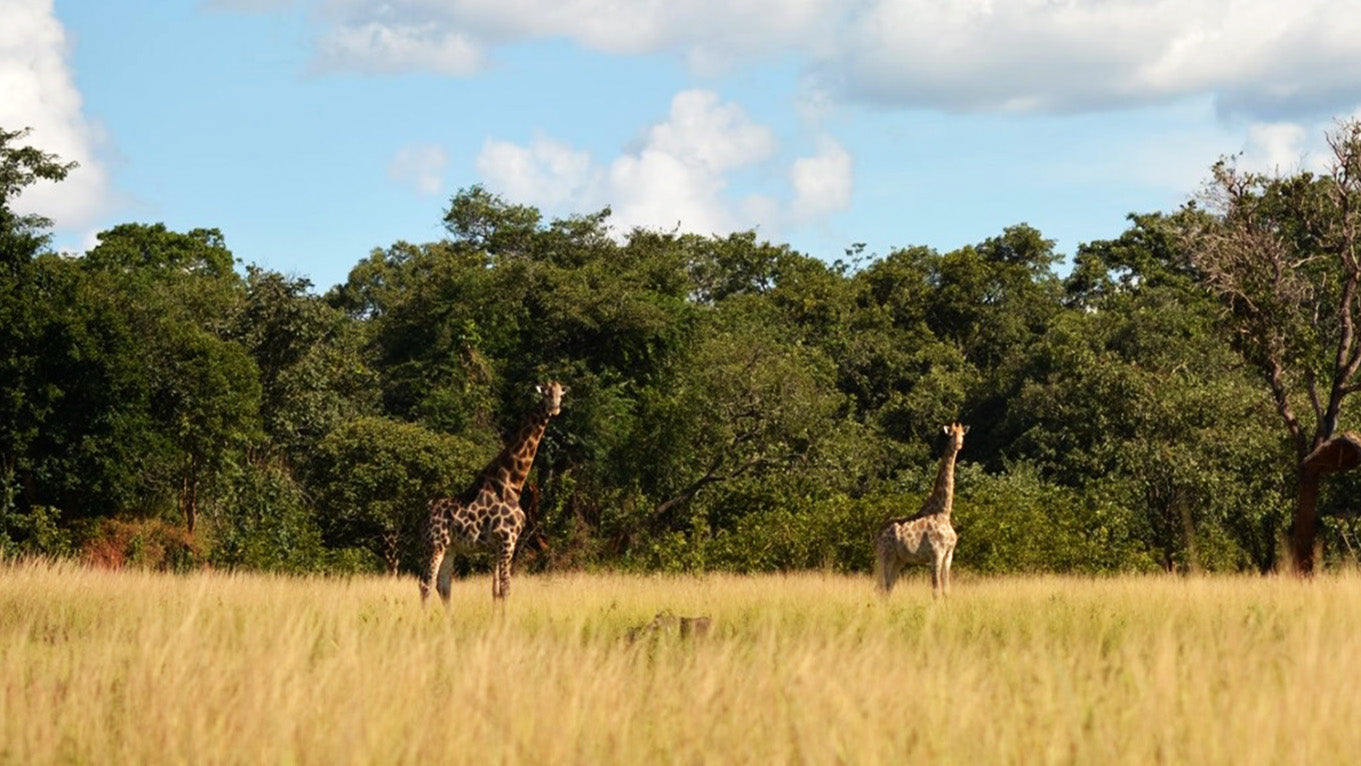-
Kinkombwa
ForestCalling's reforestation program in Kinkombwa covers 13,354 hectares within the Miombo forest of Haut Katanga, Democratic Republic of the Congo (DRC). Focused on native tree species, it aims to restore this ecosystem, benefiting carbon sequestration, wildlife preservation, and air quality, while committing to planting 4 million trees. This initiative also plays a vital role in the region's socio-economic development, creating 300 jobs, offering agricultural training, and fostering community bonds, all grounded in sound scientific principles.

Climate Impact
The Kinkombwa program's ambitious restoration effort aims to reclaim 4,531 hectares of land that has endured deforestation for over a decade within the entire site. This monumental undertaking will serve as a crucial carbon sink, capturing and sequestering an impressive 2.5 million tonnes of carbon over the span of 20 years. Beyond its environmental significance, this initiative offers a beacon of hope, illustrating how determined reforestation efforts can combat climate change while fostering ecological and societal resilience in the region. In essence, Kinkombwa stands as a testament to the power of ecological restoration in the fight against climate change, safeguarding our planet for future generations.
Biodiversity Impact
The restoration of the Kinkombwa site holds great promise for the revitalization of both animal and plant biodiversity. This initiative will bring back native plant species, fostering diverse botanical communities and healthier ecosystems. The rejuvenated areas will also serve as wildlife corridors, promoting migrations and habitat connectivity for emblematic species such as African elephants, lions, giraffe and leopards. Moreover, it will offer essential resources for the sustenance and reproduction of numerous animal species, including various endangered and endemic ones, contributing significantly to biodiversity conservation. In summary, the restoration of Kinkombwa represents a vital opportunity to enhance regional biodiversity, safeguard iconic species, and promote ecosystem well-being.
Restauration plan
We have meticulously chosen a diverse range of native tree species from Haut Katanga for our reforestation effort, carefully considering factors like post-planting survival rates, planting density, techniques, seed costs, and incubation periods. Among the 9 selected species are Afzelia quanzensis, Albizia adianthifolia, Brachystegia spiciformis, Brachystegia utilis, and Diospyros mespiliformis, each playing a crucial role in ecosystem restoration. Our comprehensive four-year reforestation plan involves planting a total of 4 million trees across 4531 hectares, equating to one million trees per year.
Livelihoods Impact
This ForestCalling reforestation program in the High Katanga region of the Democratic Republic of Congo, holds immense promise. Beyond ecological restoration, it strives to create a thriving ecosystem of knowledge and prosperity. By generating approximately 300 jobs, particularly for local inhabitants, the project ensures equitable employment opportunities for all, regardless of gender. Workers receive fair wages, elevating their livelihoods and overall quality of life. Moreover, the program invests in local infrastructure, further enhancing living conditions. Most significantly, ForestCalling provides training in agroforestry and related skills, equipping individuals with expertise in sustainable land management and nurturing the community's long-term well-being.
The Kinkombwa program's ambitious restoration effort aims to reclaim 4,531 hectares of land that has endured deforestation for over a decade within the entire site. This monumental undertaking will serve as a crucial carbon sink, capturing and sequestering an impressive 2.5 million tonnes of carbon over the span of 20 years. Beyond its environmental significance, this initiative offers a beacon of hope, illustrating how determined reforestation efforts can combat climate change while fostering ecological and societal resilience in the region. In essence, Kinkombwa stands as a testament to the power of ecological restoration in the fight against climate change, safeguarding our planet for future generations.
The restoration of the Kinkombwa site holds great promise for the revitalization of both animal and plant biodiversity. This initiative will bring back native plant species, fostering diverse botanical communities and healthier ecosystems. The rejuvenated areas will also serve as wildlife corridors, promoting migrations and habitat connectivity for emblematic species such as African elephants, lions, giraffe and leopards. Moreover, it will offer essential resources for the sustenance and reproduction of numerous animal species, including various endangered and endemic ones, contributing significantly to biodiversity conservation. In summary, the restoration of Kinkombwa represents a vital opportunity to enhance regional biodiversity, safeguard iconic species, and promote ecosystem well-being.
We have meticulously chosen a diverse range of native tree species from Haut Katanga for our reforestation effort, carefully considering factors like post-planting survival rates, planting density, techniques, seed costs, and incubation periods. Among the 9 selected species are Afzelia quanzensis, Albizia adianthifolia, Brachystegia spiciformis, Brachystegia utilis, and Diospyros mespiliformis, each playing a crucial role in ecosystem restoration. Our comprehensive four-year reforestation plan involves planting a total of 4 million trees across 4531 hectares, equating to one million trees per year.
This ForestCalling reforestation program in the High Katanga region of the Democratic Republic of Congo, holds immense promise. Beyond ecological restoration, it strives to create a thriving ecosystem of knowledge and prosperity. By generating approximately 300 jobs, particularly for local inhabitants, the project ensures equitable employment opportunities for all, regardless of gender. Workers receive fair wages, elevating their livelihoods and overall quality of life. Moreover, the program invests in local infrastructure, further enhancing living conditions. Most significantly, ForestCalling provides training in agroforestry and related skills, equipping individuals with expertise in sustainable land management and nurturing the community's long-term well-being.








